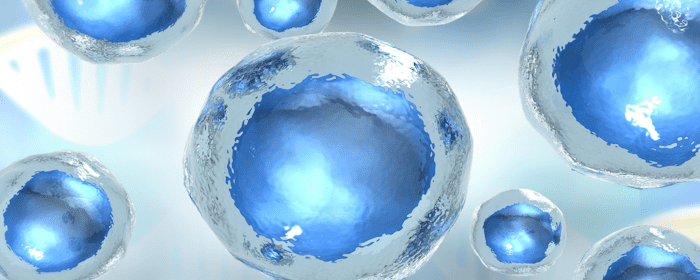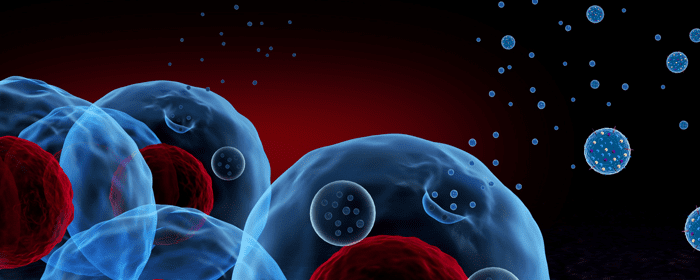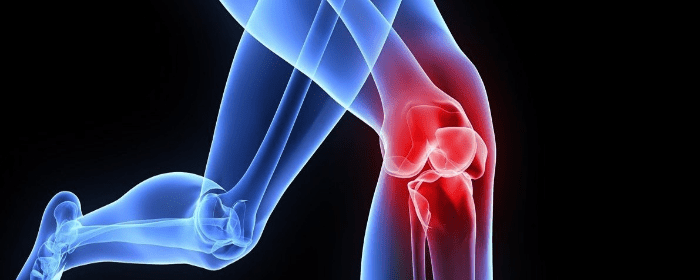
by admin | Dec 27, 2024 | Mesenchymal Stem Cells, Osteoarthritis, Regenerative Medicine, Stem Cell Research, Stem Cell Therapy
Primarily a result of its avascular structure and the relatively low metabolic activities of chondrocytes, cartilage has demonstrated a very limited ability to self-repair.
Currently, the primary interventions for cartilage-related injuries only postpone further cartilage deterioration and fail to fully restore or repair cartilage. The limited success of current clinical treatment options for cartilage-related injuries has led to the development of several regenerative medical therapies, including using mesenchymal stem cells (MSCs) as a new strategy in the treatment of cartilage injuries.
Specifically, MSCs have been found to be isolated from mesenchymal tissue and be differentiated into chondrocytes with the support of chondrogenic factors or scaffolds to repair damaged cartilage tissue.
As part of this review, Le et al. highlight the successful repair of cartilage using MSCs or MSCs in combination with chondrogenic factors and/or scaffolds. The authors also provide a detailed presentation of the outcomes of different MSC-based strategies for cartilage regeneration and discuss their prospective translation to use in clinical practice.
Additionally, the authors discuss a number of specific MSC or MSC-combination factors that have shown potential for positive cartilage regeneration outcomes.
The use of MSC alone demonstrated the potential to possibly delay future cartilage degeneration and has been successful in relieving pain and improving joint function in patients with OA and RA. While the implantation of MSCs alone failed to regenerate the injured cartilage, it did prevent chondrocyte apoptosis.
The authors also pointed out that the application of chondrogenic factors could regulate the differentiation, proliferation, and metabolic activity of MSC and have been shown to increase the therapeutic efficacies of MSCs.
The 3D environment provided through scaffolding has a crucial role in maintaining the chondrocyte phenotype of MSCs, primarily by enabling the homogeneous distribution of MSCs and providing appropriate substrate for cell growth and mechanical integrity for post-surgical implantation. According to Le et al. using this approach could induce the regeneration required for complete and functional cartilage tissue.
While there is still much to be investigated in the area of using MSC-based therapies to create bionic tissues, the authors conclude that the integration of these therapies into current clinical approaches will overcome the current existing challenges and result in a biomimetic cartilage regenerative therapy. Source: Le H, Xu W, Zhuang X, Chang F, Wang Y, Ding J. Mesenchymal stem cells for cartilage regeneration. J Tissue Eng. 2020;11:2041731420943839. Published 2020 Aug 26. doi:10.1177/2041731420943839

by admin | Jan 11, 2024 | Exosomes, Stem Cell Research, Stem Cell Therapy
Repairing the structure and functionality associated with subcutaneous cartilage defects continues to be a challenge in the fields of plastic and reconstructive surgery. While current methods, including autologous chondrocyte implantation and matrix-assisted chondrocyte implantation, have been successful in some regard, they continue to present a number of limitations, including donor limitation, donor morbidity, and degradation of the graft tissue.
Recently, cartilage progenitor cell (CPC)-based tissue engineering has drawn attention in the field of cartilage regeneration, primarily for its strong chondrogenic differentiation capacity.
Unfortunately, a general lack of a suitable chondrogenic niche has continued to hinder the clinical application of CPC-regenerated cartilage in the subcutaneous environment.
Considering this, and for the purposes of this study, Chen et al. explored the use of exosomes derived from chondrocytes (CC-Exos) as a way to provide the CPC constructs with a cartilage signal in subcutaneous environment for efficient ectopic cartilage regeneration.
After 12 weeks of post-surgical injection of CC-Exos, the authors’ animal model demonstrated that the CC-Exos injections effectively increased collagen deposition and minimized vascular ingrowth in engineered constructs, which efficiently and reproducibly developed into cartilage. This study also demonstrated that the CPC constructs supplied with these CC-Exos could also form cartilage-like tissue with minimal hypertrophy in a subcutaneous environment and with no help from any chondrogenic factors.
Additionally, Chen et al.’s study showed that CC-Exos significantly promoted chondrogenesis-related factors at the mRNA and protein levels in CPCs while also limiting angiogenesis typically associated with hypertrophic differentiation and subsequent calcification.
Despite these promising results, Chen et al. point out that the exact components associated with CC-Exos have yet to be determined. Because of this, the authors call for additional studies to determine the specific components of CC-Exos and their underlying mechanisms related to cartilage repair.
Considering the findings of this study, the authors believe that CC-Exos alone could provide a preferable chondrogenic environment, help maintain the stability of cartilage tissue, and serve as a promising therapeutic approach for the treatment of ectopic cartilage defects.
Source: Chen, Y., Xue, K., Zhang, X. et al. Exosomes derived from mature chondrocytes facilitate subcutaneous stable ectopic chondrogenesis of cartilage progenitor cells. Stem Cell Res Ther 9, 318 (2018). https://doi.org/10.1186/s13287-018-1047-2

by admin | Mar 1, 2019 | Mesenchymal Stem Cells, Osteoarthritis, Stem Cell Therapy, Studies
Cartilage plays several important roles in the way joints move and function. Joint cartilage provides lubrication, acts as a shock absorber, and helps the joint move smoothly. Joint cartilage is comprised of two substances chondrocytes (i.e. cartilage cells) and extracellular matrix (proteins such as hyaluronic acid, collagen, fibronectin, etc.).
Many conditions can lead to joint cartilage defects. In young people, the most common cause of the joint cartilage defect is an injury. For instance, a football player suffers a hard contact that injures the joint. Another example is a gymnast who repeatedly places substantial impact forces on the knee and other joints of the lower body, resulting in damage. In older people, the most common cause of joint cartilage defects is Osteoarthritis. Over time, the joint cartilage breaks down in the cartilage loses its ability to lubricate, absorb shock, and support the smooth movement of the joint. This leads to stiffness, pain, and “trick” joints, among other symptoms.
Orthopedic surgeons, rheumatologists, and other physicians have attempted to treat these conditions by injecting the damaged joint with one of the two main components of joint cartilage: extracellular matrix. Physicians inject hyaluronic acid (and sometimes related extracellular matrix proteins) to help replace and restore damaged joints. This approach can be helpful for some patients, but it is certainly not a cure.
Only recently, have researchers attempted to replace the other component of joint cartilage: chondrocytes. Specifically, researchers have focused their efforts on mesenchymal stem cells that have the ability to differentiate and become cartilage cells. Li and colleagues injected combinations of bone marrow-derived mesenchymal stem cells and hyaluronic acid into animals with experimental cartilage defects. They showed that hyaluronic acid injections alone modestly repaired the cartilage damage. However, when stem cells plus hyaluronic acid was injected, the joints were almost completely repaired. In other words, stem cells plus hyaluronic acid resulted in much greater improvement in joint cartilage damage than hyaluronic acid alone.
The authors of the study concluded that “bone marrow stem cells plus hyaluronic acid could be a better way to repair cartilage defects.” While additional work is needed, these results are extremely exciting for people who suffer from joint cartilage defects such as osteoarthritis. In the future, people who are candidates for hyaluronic acid injection treatments may instead receive a combination of hyaluronic acid plus stem cells and may enjoy an even greater benefit than hyaluronic acid treatment alone.
Reference: Li et al. (2018). Mesenchymal Stem Cells in Combination with Hyaluronic Acid for Articular Cartilage Defects. Scientific Reports. 2018; 8: 9900.

by admin | Dec 29, 2018 | Mesenchymal Stem Cells, Osteoarthritis, Stem Cell Therapy
Most large joints of the body contain cartilage, a substance that is softer and more flexible than bone. Because of its softness and flexibility, cartilage is well-suited to protect the bones as they move across one another. Unfortunately, this softness and flexibility also makes cartilage prone to injury and erosion. In patients with osteoarthritis, forexample, cartilage breaks down to the point that bone rubs against bone,causing pain and disability. Certain injuries can damage the cartilage (i.e.osteochondral lesion), which can essentially have the same effect.
Once the cartilage of joints has become damaged, there is
little that can be done to fix it. Patients may receive steroid injections into
the joint to reduce inflammation, and may rely on pain medications to relieve
the pain and swelling. Short of joint replacement therapy, no treatments can
reverse cartilage damage once it has occurred.
Fortunately, mesenchymal stem cells may soon be able to reverse cartilage defects that arise from osteochondral lesions and osteoarthritis. Wakitani and colleagues took samples of patients’ bone marrow, which contains mesenchymal stem cells. They then used various laboratory techniques to increase the number of stem cells in the sample. Four weekslater, the researchers then reinjected the concentrated stem cells back intothe same patient using their own source of stem cells. The Wakitani groupshowed that stem cell transplantation improved the patient’s clinical symptoms bysix months, a benefit that continued for two years on average. Samples takenfrom the patients 12 months later showed that the damaged cartilage had beenrepaired. In other work, Centeno and co-authors showed that bone marrow-derived mesenchymal stemcells could increase the volume of cartilage, reduce pain, and increase rangeof motion 24 weeks after stem cell transplantation.
Research continues to determine which stem cells are most useful, how many stem cells should be injected, how many injections need to be administered, and how should those stem cells be prepared before they are injected? Nonetheless, certain groups are making great strides in this area. In fact, the recent discovery of human skeletal stem cells promises to accelerate stem cell research into treating disorders of bone and cartilage.
Reference
Schmitt et al. (2012). Application of Stem Cells in Orthopedics. Stem Cells International. 2012: 394962





 St. Petersburg, Florida
St. Petersburg, Florida
